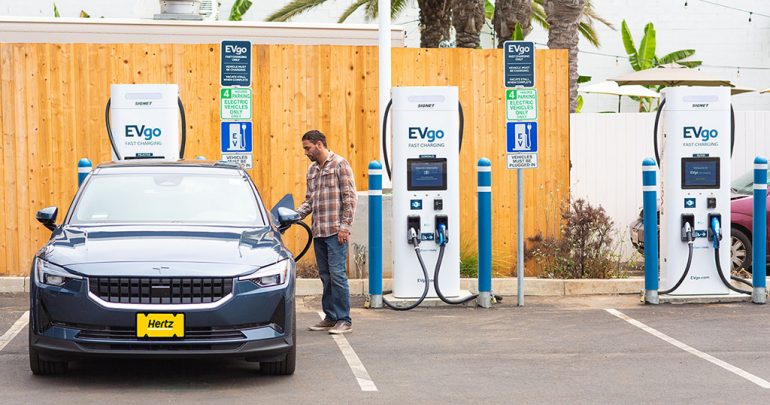
The rental car firm Hertz recently announced its decision to sell off 20,000 electric vehicles (EVs) from its U.S. fleet, opting instead for gas-powered vehicles. The move comes in response to higher expenses associated with collision and damage repairs for EVs.
The company, which operates vehicles from well-known manufacturers such as Tesla Inc and Polestar, experienced a 3% decline in its shares at market open following the announcement. Hertz had previously expressed ambitious plans to incorporate electric vehicles into its fleet, with intentions to order 100,000 Teslas by the end of 2022 and commit to purchasing up to 65,000 units from Polestar over the next five years.
Also, don’t forget that you can get discounted new car pricing with a free quote through qualified local dealer partners.
In a regulatory filing on Thursday, Hertz attributed the decision to sell the EVs to the persistently high costs associated with collision and damage repairs, primarily linked to electric vehicles. The expenses incurred in this quarter prompted the company to reconsider its strategy. Hertz had initially set a target for 25% of its fleet to be electric by the end of 2024.
The proposed sale of 20,000 EVs is expected to result in approximately $245 million in incremental depreciation expenses for Hertz in the fourth quarter of 2023. The company cautioned about a potential impact on adjusted corporate core profit during this period. Despite this setback, Hertz emphasized its commitment to improving profitability for the remaining electric vehicle fleet.
Hertz’s used car website currently lists over 700 electric vehicles for sale, featuring models from manufacturers like BMW, Chevrolet, and Tesla, including the BMW i3, Chevrolet Bolt, and Tesla’s popular Model 3 and Model Y SUVs. The decision to shift away from a significant portion of its EV fleet reflects the challenges rental companies face in managing the repair costs associated with electric vehicles, highlighting the need for ongoing efforts to address these concerns in the evolving landscape of sustainable transportation.
Source: Reuters